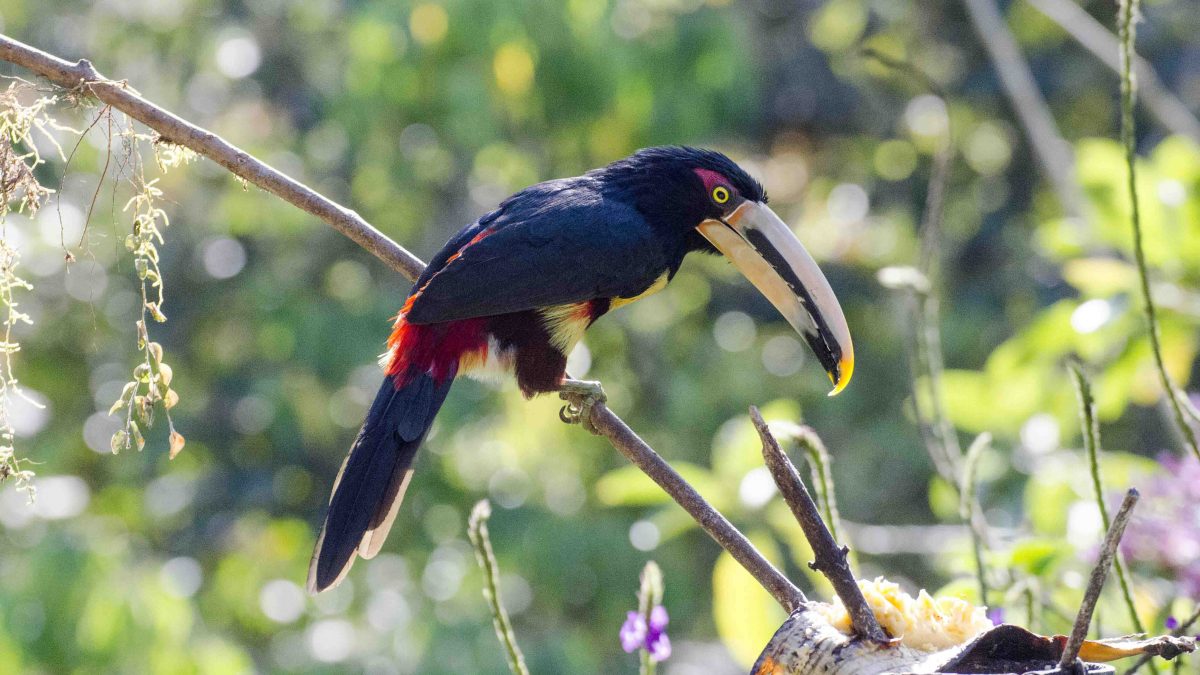As responsible travelers evolve, so do the stories we share.
This article is part of our living archive — trusted content we continue to care for.
First published on May 20, 2020 • Last updated on August 7, 2020.
The Birdwatching Community
It is very easy to integrate into a community of birders, where the oldest members welcome you warmly and share knowledge based on their experience.
There are groups of amateurs and professionals, and they all share the same passion, birds. They attempt the identification of species via recordings, audios, photos and physical descriptions, not only identifying the bird but also registering proof of its location.
Birdwatching is a social phenomenon that involves lots of learning, including techniques for both finding and identifying this beautiful species.

Ecuador is a biodiverse nation
In the context of biodiversity, Ecuador is one of the seventeen mega-diverse countries in the world. It is recognized for its great biological and evolutionary wealth on a global scale. Of course, geological activity has played an important factor as Ecuador’s geography spans from sea level to almost 20,500 feet above sea level, while crossing four natural regions, each with its own characteristics and species that are found in each regions diverse microclimates.
“Because every bird matters, count from your house, patio, or garden”
The Covid-19 quarantine did not prevent Global Big Day’s annual count from taking place. With the slogan “From your window, from your garden, every bird counts”, the event created a lot of expectation and emotion as people realized that they could count and register birds from any point of the country.
For the first time in the history of Global Big Day, this activity included more than 50,000 people simultaneously in a single day. They used basic tools: good hearing and sharp eyes but also remote transmission and consultation, cameras, cell phones, and apps.
Ecuador earned third place in the global bird count with the registration of 995 species.
Some of our website’s members, including bird guides, participated in the Global Big Day of Ecuador:
- Nelson Apolo – 92 species in Rio Nambillo and 42 species near his house in Mindo
- Maartje Musschenga – 4 species and 7 species near her house in Quito
- Jacqueline Granda – 4 species near her house in Quito
- Carlos Díaz – 18 species along the Ecoruta Kurispishku-Mundag in Tugurahua.


All You Need Is Curiosity To Start Birdwatching
Global Big Day is an opportunity to learn, participate, and preserve our natural places. All you need is enthusiasm, curiosity, and commitment.
The next edition of Global Big Day will be held in October of this year. All the birds that you can identify can be registered on Ebird.org as your contribution to conservation research.
This digital platform has identification apps such as Merlin, free online courses, prizes and incentives for registration of lists, and more learning sources with which you can become an expert who cares for your home called Planet Earth and its beautiful species with wings.



Land of Birds
TIERRA DE PÁJAROS
“It is all of América
aviary without measure.
In the sonorous dawn
each tree is a chorus.
So many wings in flight
lift América to heaven.”
Jorge Carrera Andrade
(Quito, 1903 -1978)
translation by Angie Drake























